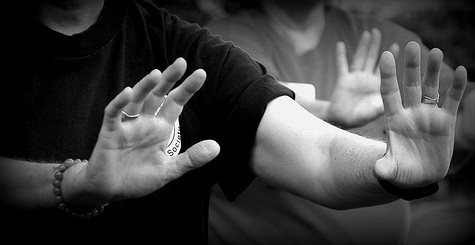wellnessexclusive.com
Your Free Guide to Good Health!

Alternative Therapies
- Alternative Medicine
- Access Bars
- Access Consciousness
- Acupressure
- Acupuncture
- Angel Healing
- Ayurveda
- Bach Flower Remedies
- Breathwork
- Cosmetic Acupuncture
- Crystal Healing
- Cupping Therapy
- Emotional Freedom Technique (EFT)
- Energy Healing
- Energy Medicine
- Ergonomics
- Family Constellation
- Face Reading
- Fengshui
- Geopathic Stress
- Graphology
- Holistic Solutions
- Holy Fire Reiki
- Homeopathy
- Ho'oponopono
- Humkara with Haleem
- Hypnotherapy
- Inner Child Therapy
- Jikiden Reiki
- Kwan Yin
- Lama Fera
- Law of Attraction
- Lecher Antenna
- Manual Therapy
- Meditation
- Melchizedek Method
- Merlin Trinity Healing
- Motivational Counseling
- Mudra Healing
- Munay - Ki Rites
- Naturopathy
- Neuro Linguistic Programming (NLP)
- Panchakarma (Ayurveda)
- Panchkarma Holistic Healing - Mind Control
- Past Life Regression
- Pendulum Dowsing
- Physiotherapy
- Pranic Healing
- Pythagorean Numerology
- Pyramids
- Reiki
- Rudraksh
- Silva Mind Control Method
- Sujok therapy
- Symphony of Possibilities
- Tarot
- Theta Healing
- Twin Flame Healing
- Unani Medicine
- Violet Flame Healing
- Vision Board
- Yoga
- Wicca
- Womb Healing
Diseases & Conditions
- Acne & Pimples
- Allergies
- Arthritis
- Asthma
- Behavioural Disorders
- Dandruff
- Diabetes
- Emotional Problems
- Gallstones
- Gastritis
- Hairloss
- Heart Diseases
- Hormonal Problems
- Hypertension
- Immune Disorders
- Infections
- Infertility
- Jaundice
- Kidney Disorders
- Liver Disorders
- Menstrual Disorders
- Migraine
- Neck & Back Pain
- Obesity
- Osteoporosis
- Peptic Ulcer
- Prevention
- Prostate Problems
- Psoriasis
- Sexual Dysfunctions
- Sinusitis
- Sleep Disorders
- Skin Diseases
- Stress
- Thyroid Disorders
- Ulcerative Colitis
- Urinary Infections
General Wellness
 Overview
Overview
Tai Chi [pronounced: tie chee] is a mind-body practice that originated in China as a martial art. Most T'ai Chi forms nowadays are termed internal martial art, i.e. consisting of non-combative, gentle and peaceful movements.
A person doing Tai Chi moves the body slowly and gently, while breathing deeply in a meditating way (moving meditation). This practice helps the energy flow throughout the body being the vital energy, called Chi.
Brief HistoryTai Chi developed in China about the 12th century CE. It started as martial art, a practice of fighting or self-defense, usually without weapons. Over time, people began to use Tai Chi for health purposes instead. Many different styles of Tai Chi and variations thereof have developed since then. The term Tai Chi has been translated in various ways, such as "internal martial art", "supreme ultimate”, "boundless fist" and "balance of the opposing forces of nature". While exact accounts of Tai Chi history somewhat differ, the most consistently important figure is a Taoist monk (and semi-legendary figure) in 12th-century China, named Chang San-Feng (or: Zan Sanfeng). Chang is said to have observed five animals -- tiger, dragon, leopard, snake, crane –- and to have concluded that the snake and the crane, through their movements, were the ones most able to overcome strong, unyielding opponents. Chang developed an initial set of exercises that imitated the movements of animals. He also brought flexibility and graceful movement (in place of strength in martial arts), as well as some key philosophical concepts.
Modern History1500 CE ↔ Taoist philosophy blends with physical Tai Chi
1950s ↔ Forms were simplified in China
1970s ↔ Tai Chi becomes more known and popular in the West
Philosophy of Tai ChiOne of the core concepts of Tai Chi is that the forces of Yin and Yang [pronounced: yeen and young] should be in balance. In Chinese philosophy, yin and yang are two principles or elements that make up the universe and everything in it. They also oppose each other. Yin has the qualities of water –- such as coolness, darkness, stillness, inward and downward directions -– and the feminine in character. Yang has the qualities of fire -– such as heat, light, action, upward and outward movement -– and the masculine. A person’s yin and yang needs to be in balance in order to be healthy. Tai Chi is a practice that supports this balance.
Four basic Components of Tai ChiPurposeful Movement. In Tai Chi, individuals feel the ground with their feet, sink their weight more towards the ground (soft knees) and maintain good body alignment (no swaying or leaning), in order to promote stability and balance.
Shifting. Most movements flow from back to front or side to side, while the body weight is shifting from one leg to other.
Posture. An upright posture is maintained throughout each movement, including the head forming one straight vertical line with the spine.
Deep breathing. With the flow of each movement we breath in deeply (from the Daantiėn) and breath out as the movement continues.
Tai Chi BenefitsMany people practice Tai Chi for health purposes. In the United States, a 2002 national survey on the use of CAM found that 1.3 percent of the 31,000 survey participants had used Tai Chi for health reasons in the year before the survey. Tai Chi is widely practiced in China (including in hospitals and clinics) and in other countries. In Asia, many people consider Tai Chi to be the most beneficial fitness practice for older people, because it is gentle and can be modified easily if a person has health limitations.
Some of the main Tai Chi health benefits:Massage (energy flow) of the internal organs.
Aid the exchange of gases in the lungs.
Help to the digestive system (removing blockages).Increase in calmness and awareness (mental health).
Improvement of balance.
Some of the benefits from mere Tai Chi exercise:Tai Chi is a low-impact form of exercise.
It is a weight-bearing exercise that can have certain health benefits, such as for the bones.
It can be seen as an aerobic exercise.
It improves physical condition, muscle strength, coordination, and flexibility.
It aids to better balance and a lower risk of falling, especially in elderly people.
It eases pain and stiffness, such as arthritis.
It improves rest and sleep.
Mr Babu Rao : Black Belt 5th Dan in Kung-fu, 3rd Star in Tai-Chi
Often, when we only see our instructors in class, it's hard to really get to know them on a personal level. We learn that they're great fighters, that they're strong role models, disciplined and hardworking, but beyond that, Mr Babu Rao is virtually a life long martial artist. He has studied numerous fighting systems tutored by some of the most renowned martial artists, starting at an early age. He has earned countless titles throughout the country, combining constant study, work, and commitment to be one of the best.
Babu Rao continues to instruct his students on the seven traditional values: courage, justice, generosity, politeness, honor, honesty, and loyalty. In his class he sweats just as hard as his students. He believes each class is not just about training for fitness or self-defense, but about training for life.
A man with a fiery passion for martial arts, Babu Rao has passion that has led him into different fields of martial arts, and he has achieved much in almost every field he has explored. He strongly believes that Martial Arts is a vehicle for personal growth. He have been teaching martial arts to both children and adults for many years now..
Martial Arts Background
1988: Joined Karate
Learned Karate Katas (movements), Sparring,
1995: Achieved Black Belt
1995: Joined Kung-Fu
Learned: Katas, Animal Kung-Fu
Animal Styles:
Eagle, Snake, Monkey, Leopard, Tiger & Dragon
Weapon Styles:
3ft, 6ft & 9ft Stick, Knife, Dagger, Double Moon, Sun & Moon, Tomfa, long Chuk’s Knife.
1999: Achieved Black Belt In Kung-Fu
2000: 1st Dan In kung-fu
2001: 2nd Dan In kung-fu
2003: 3rd Dan In kung-fu
2000: Started Learning Tai-Chi
Basic Exercise, Short Form, Long Form & Formations
2004: First Star in Tai-Chi
2005: Second Star in Tai-Chi
2006: Third Star in Tai-Chi
1999 – Present: Started as a trainer for Karate, Kung-Fu, Tai-Chi & Self Defense.
Achievements Track
1992: Won Gold Medal for sparring in state level championship.
1993: Okhinova Marital Arts 2nd Prize
1993: Won Gold Medal for katas in state level championship.
1994: Okhinova Martial Arts Katas Gold Medlist
1995: Okhinova Sparring State level Champion Ship Gold Medal
And Many more……….
Committees
1998: Shotokan National Committee
2006 to Till Date : AP All Style Martial Joint Secretary (State Wide)
2007: International Committee Of Bodokan
2008: Asian Continental Bodokan
Head Coach
2008: Given Training For Vijayawada Police Department
2008: Given Training For Railway Athletes (Tai-Chi)
2008: Given Training For ARMY 125TA Battalion for the art of Kung-Fu
2009: Given Training For ADP India Corporation Ltd for the art of self defense
2009: Given Training For D & Shaw Company Ltd.
On Going Classes:
The Reqelford International School , Rampally.
St. Peters Model School, Nacharam.
St Anthony's High School, Himayat Nagar.
Kennedy High The Global School, Miyapur.
Guntur Vikas School, Miyapur.
Oasis School of Execllence, Shamshabad.
Open Classes for all in Sec’bad YMAC, Ecil X Roads, Uppal, Thirumalgiri & Lallapet.
National & International
International Organizing Secretary for all martial arts National Level Referee (1999-Present) at
Vizag, Bombay, Vijayawada, Chennai, Kerala & Karnataka. He is also organizing state level championship from 2004 till now.
Niskin Monks Kung-Fu Universe
Shaolin Tai-Chi Kung-Fu Academy
Contact :+91 98498 44231
Email : niskinmonk@gmail.com
Please visit : http://www.nmku.in


